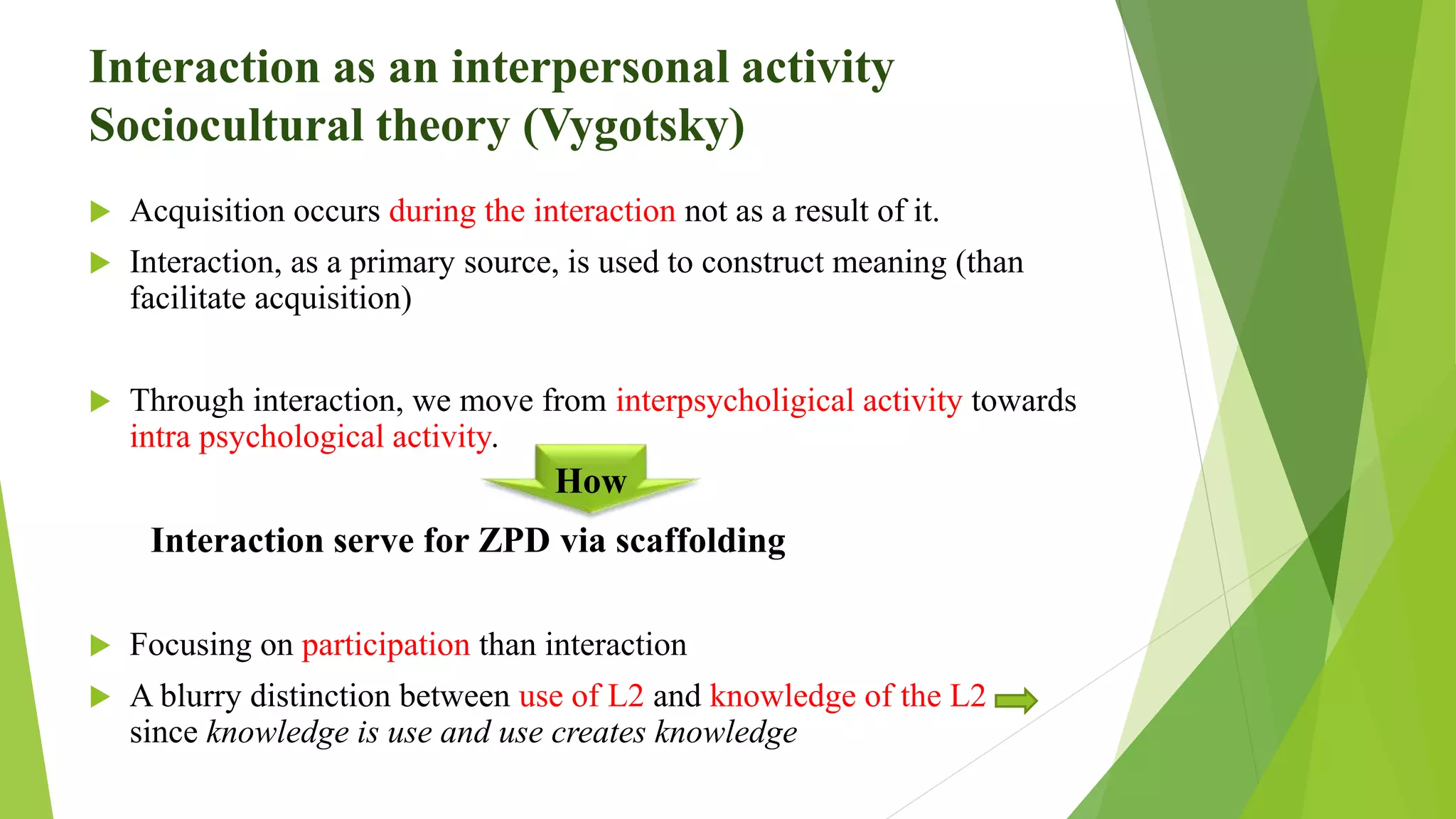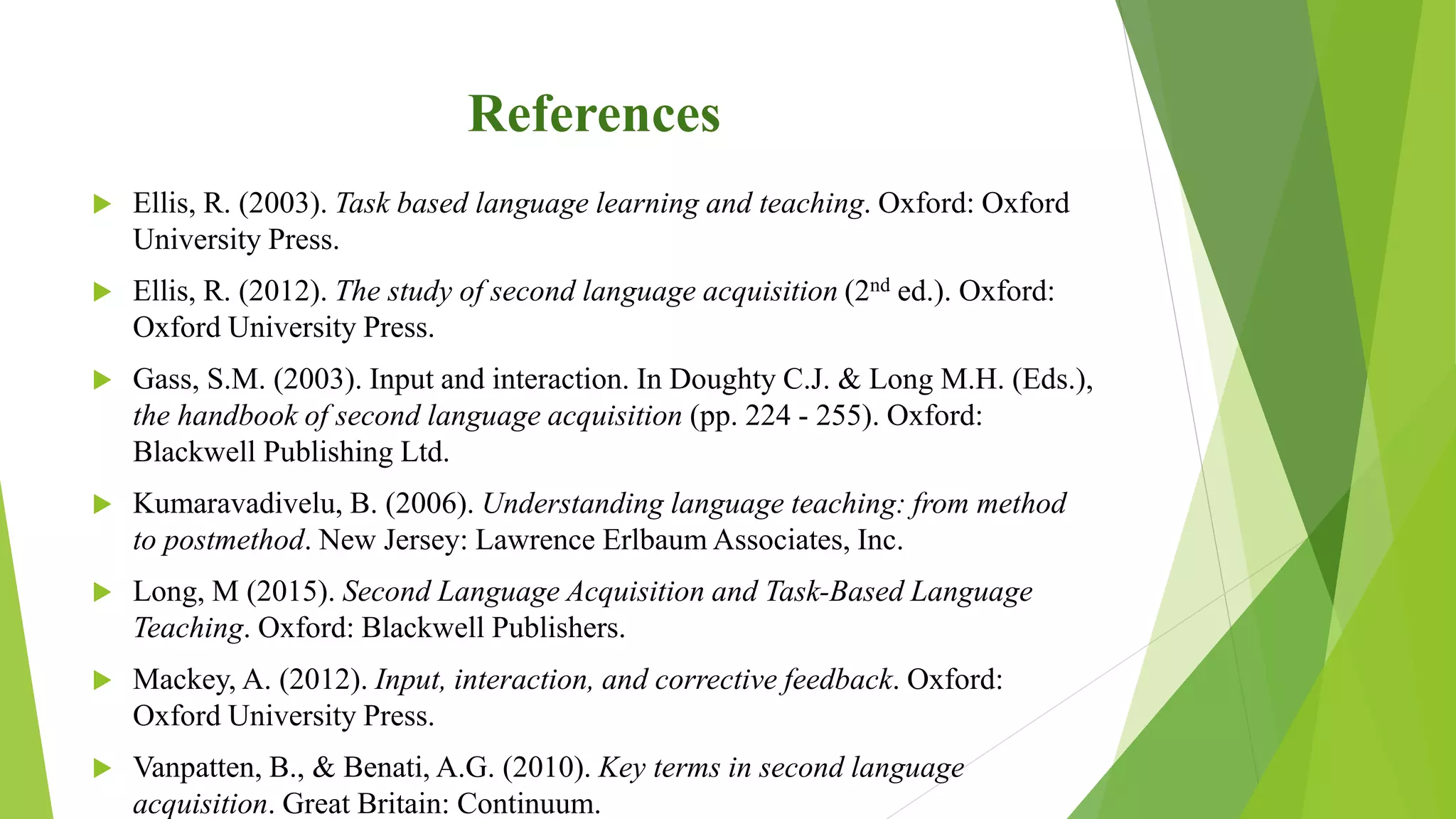The document discusses the importance of input and interaction in second language (L2) learning, defining input as the exposure to the target language and highlighting its elements of availability and accessibility. It reviews various theories of second language acquisition (SLA) regarding the role of input, including behaviorism, mentalism, and interactionism, ultimately emphasizing that interaction and comprehensible output also play crucial roles in the learning process. The document also outlines different types of input and interaction in classroom settings, suggesting that both form-focused instruction and task-based language teaching can enhance language acquisition.

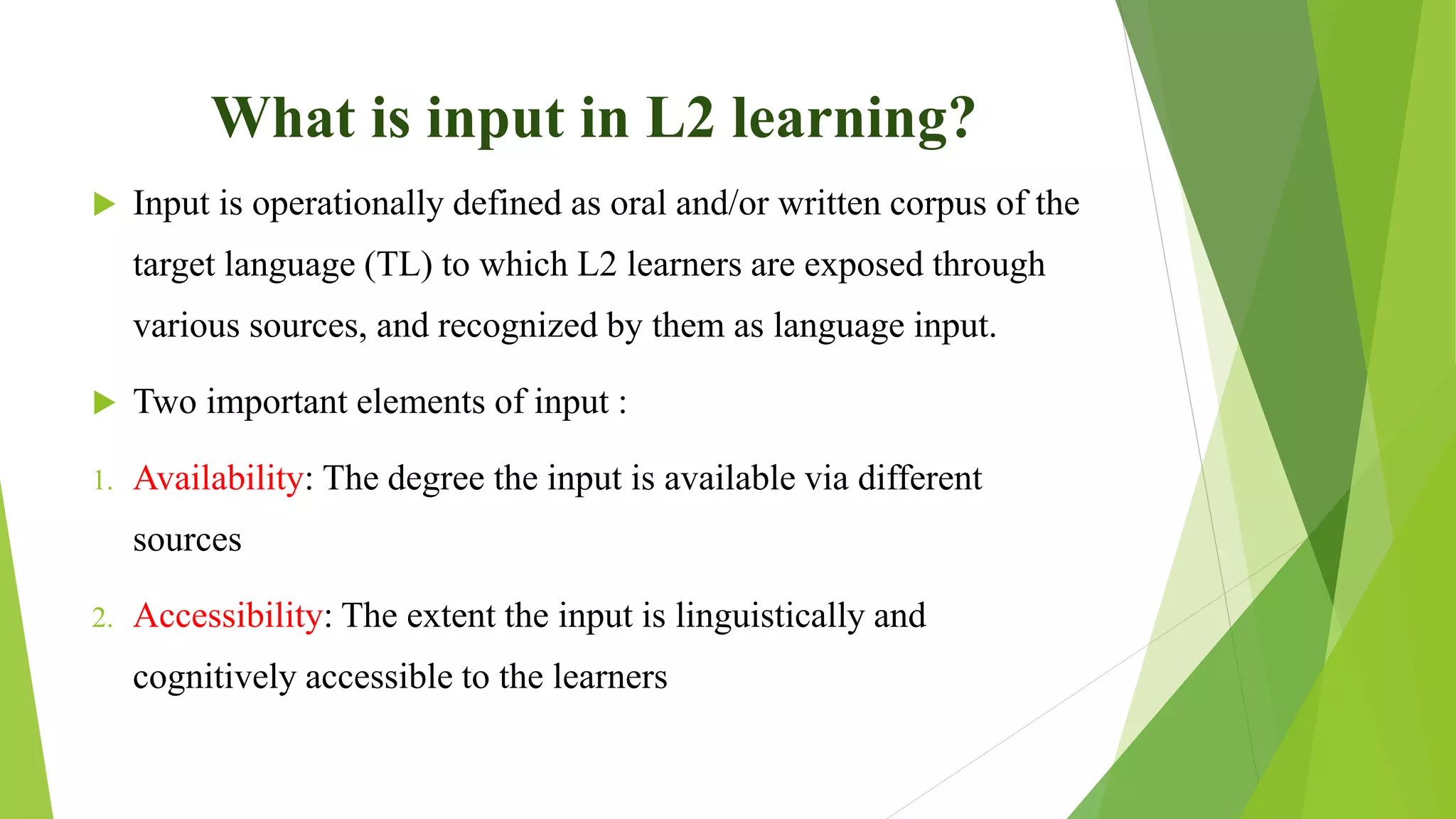
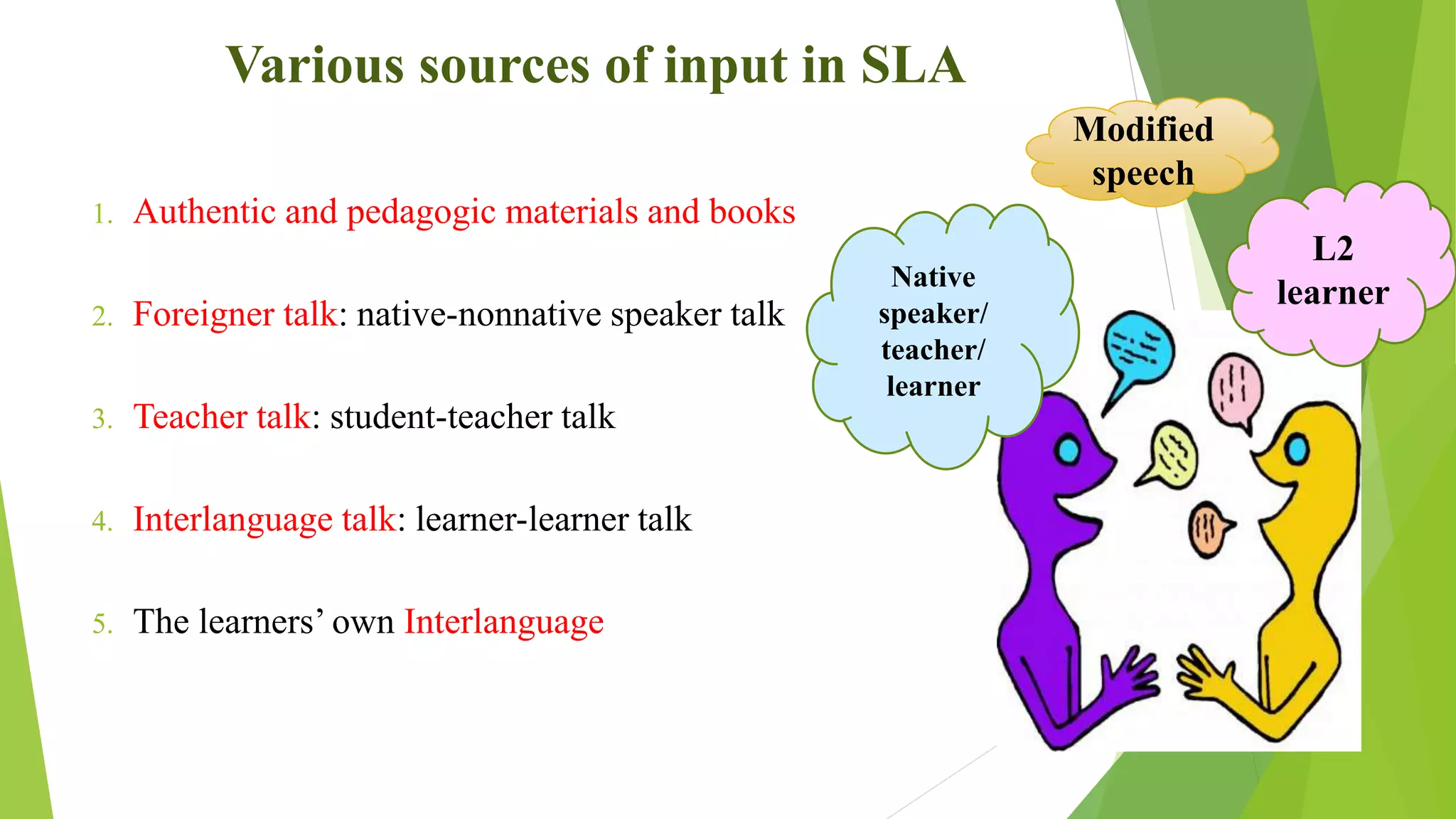
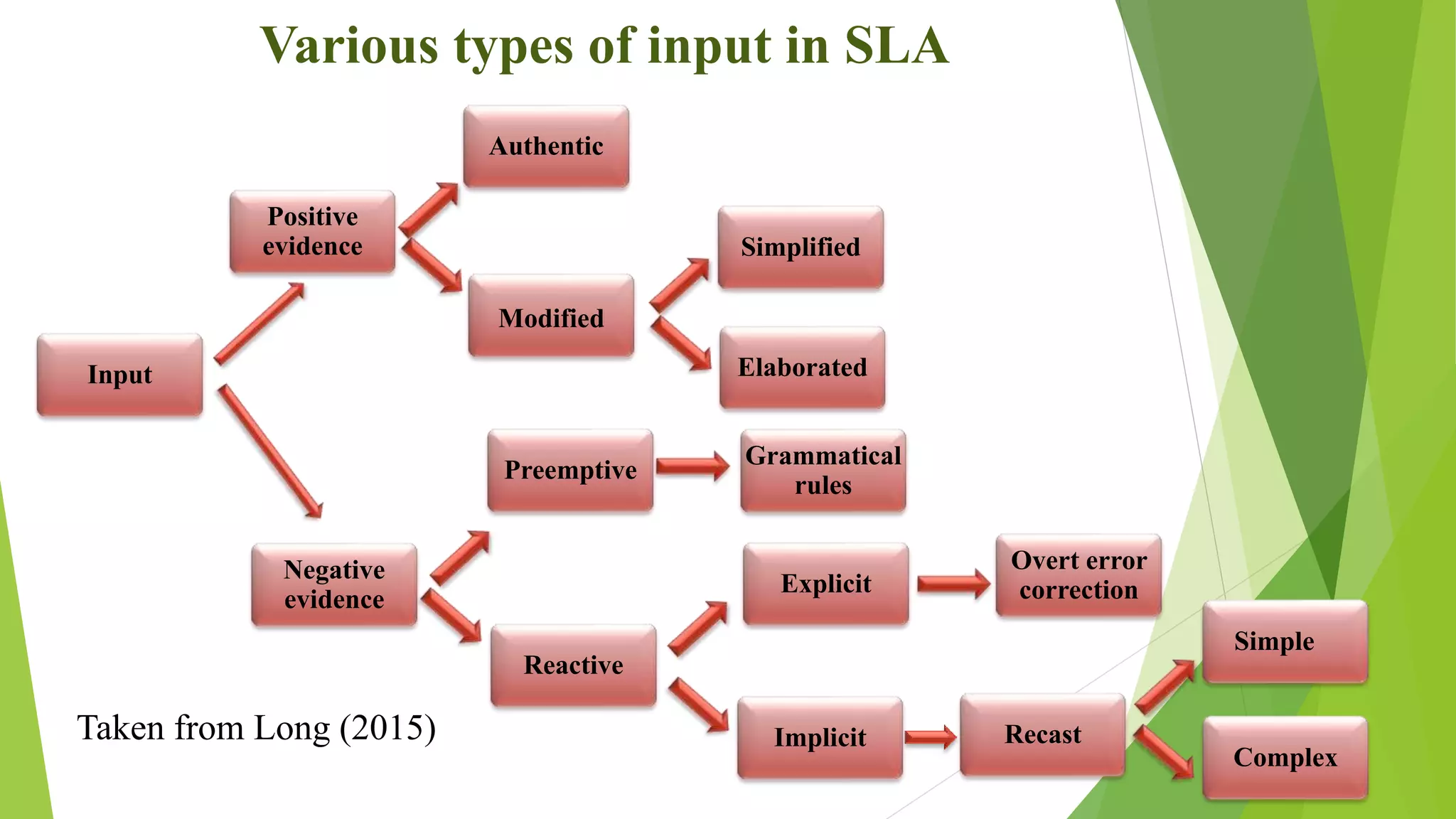
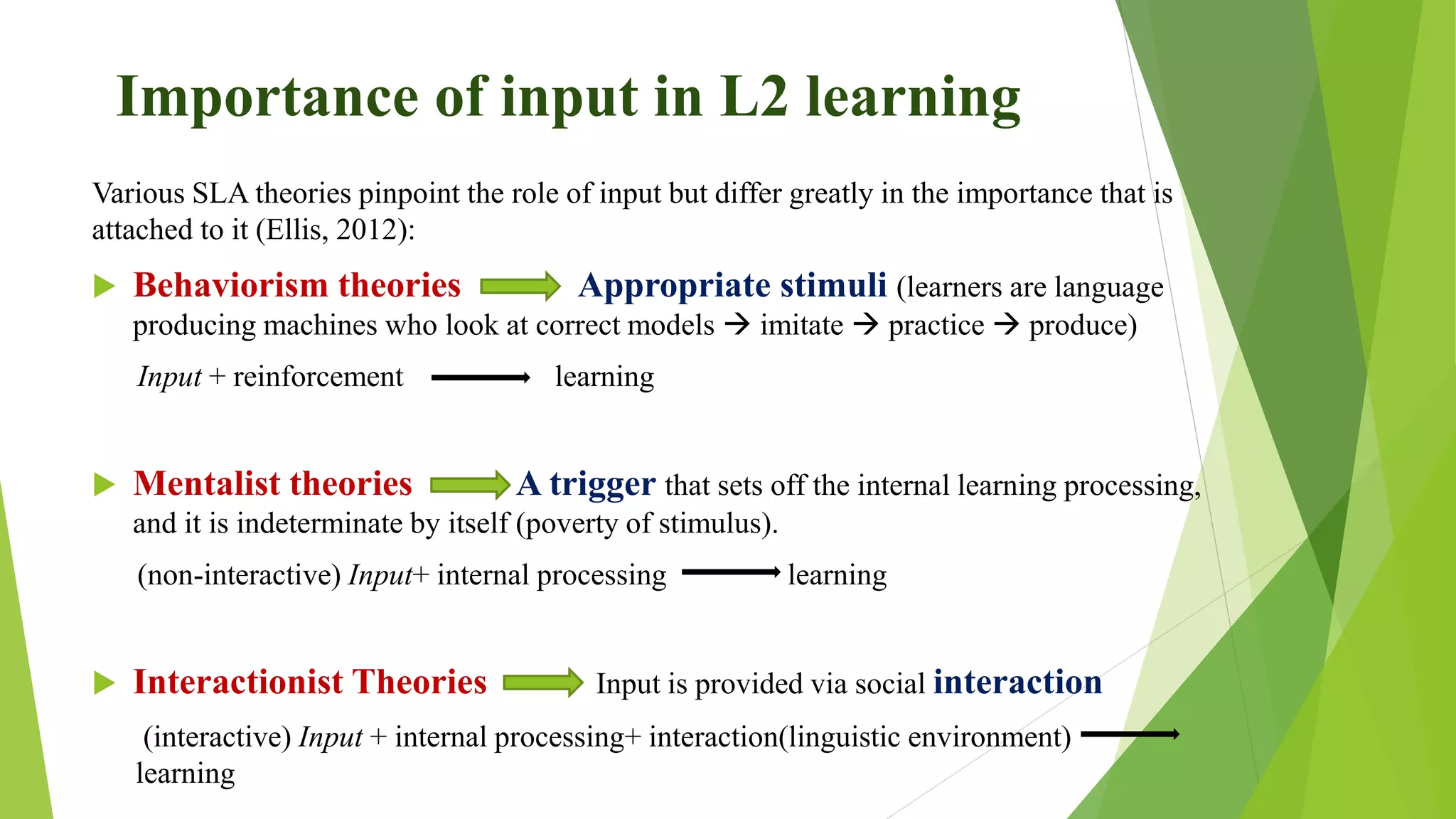
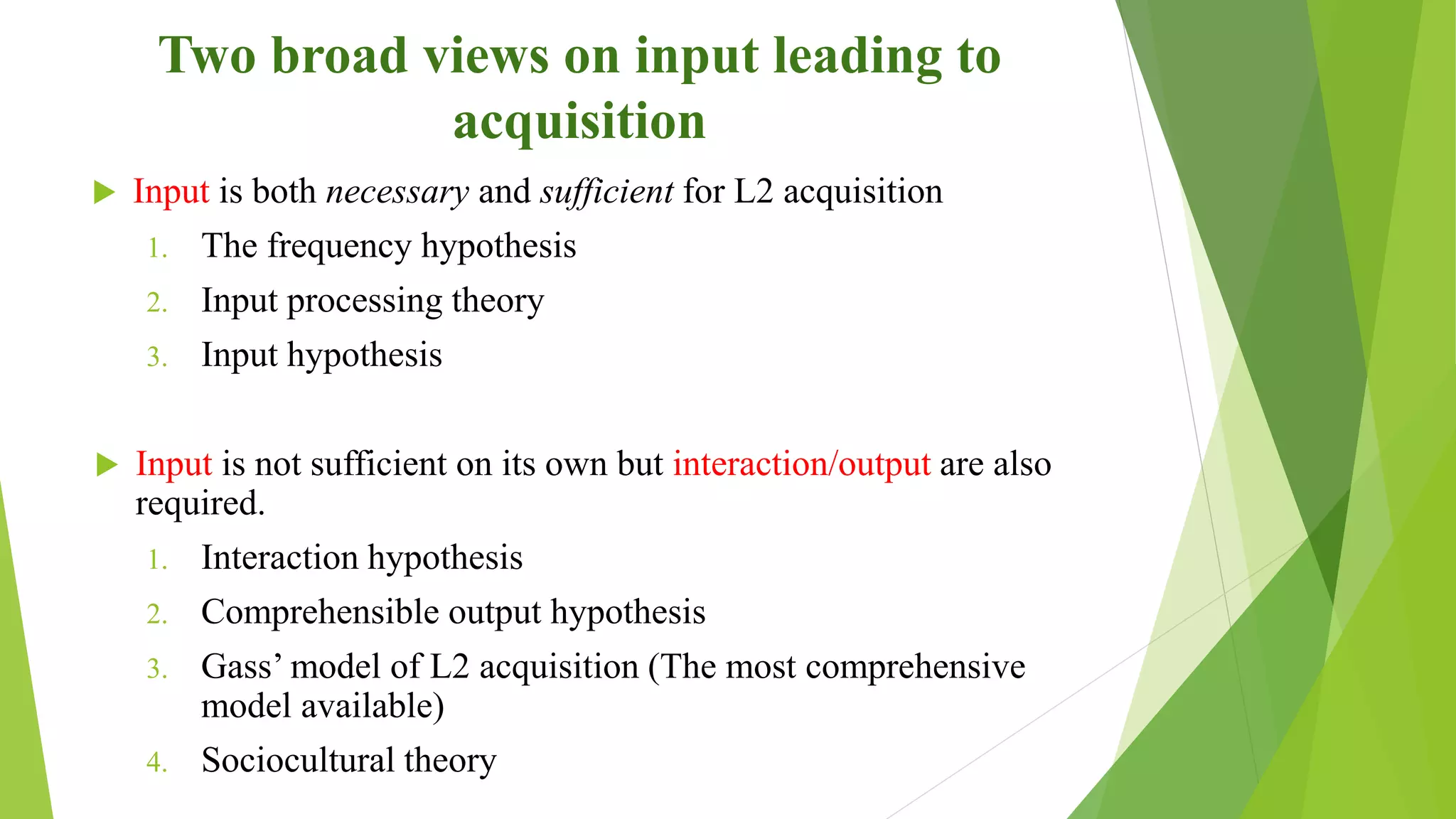
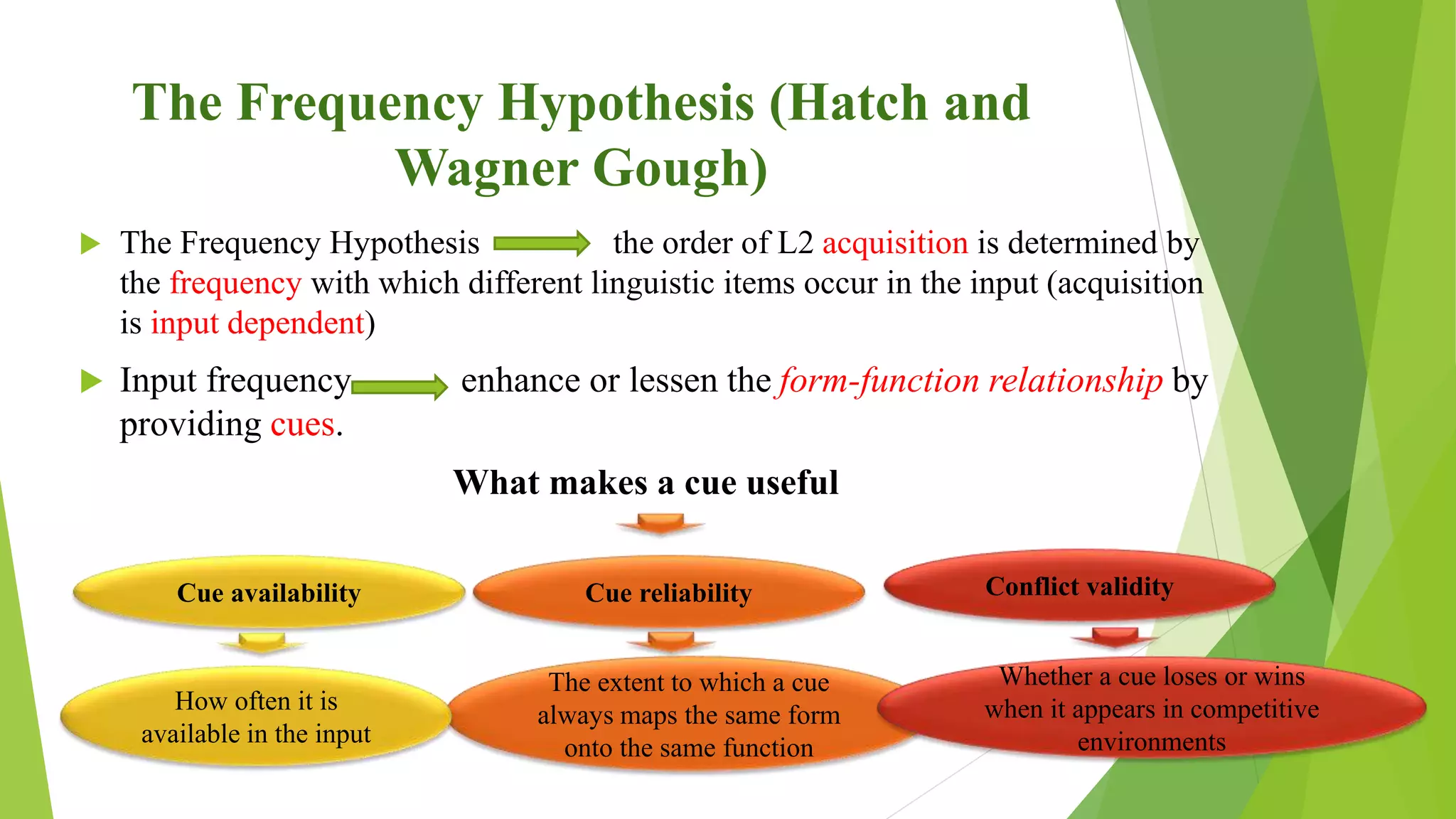

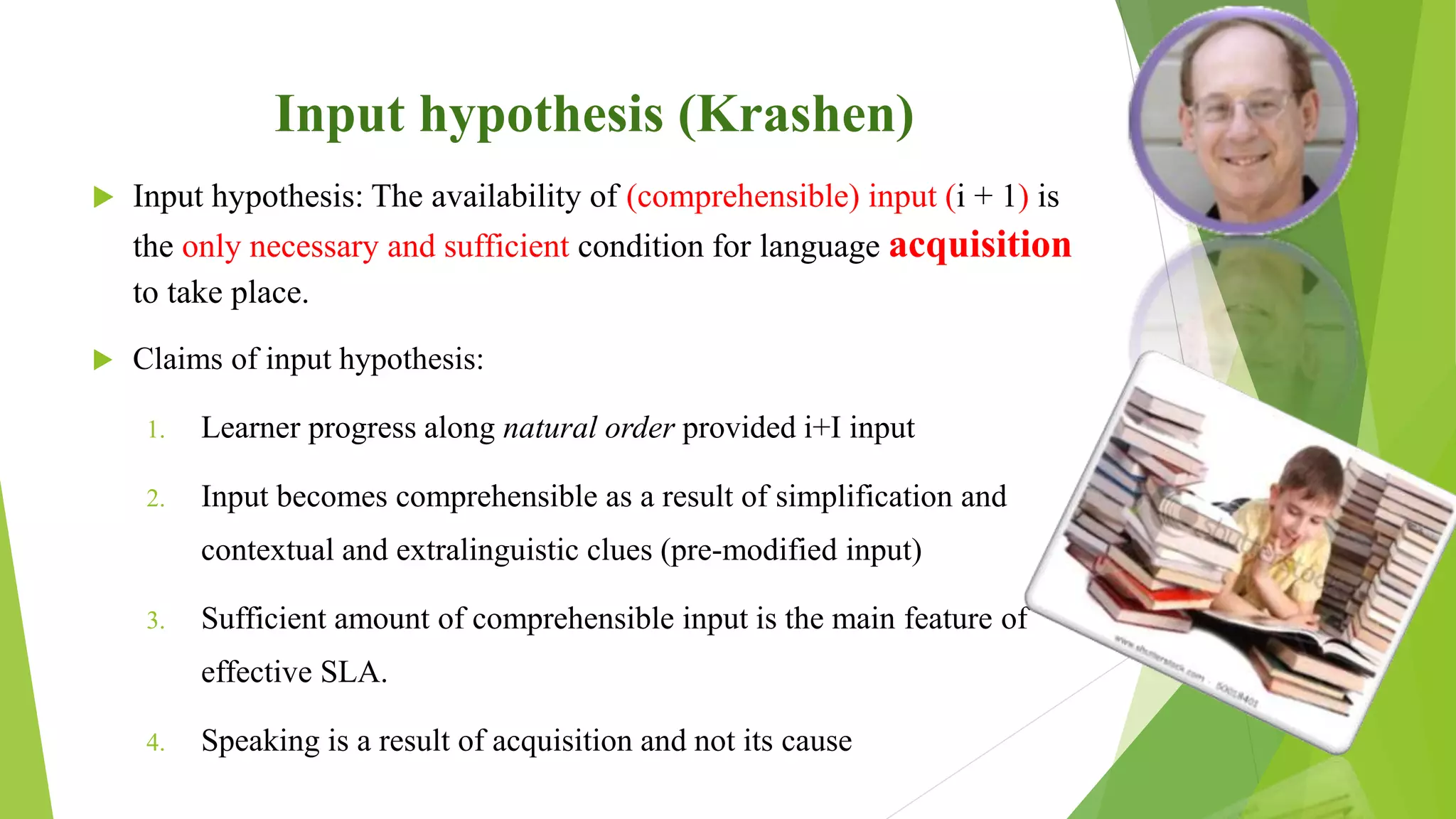

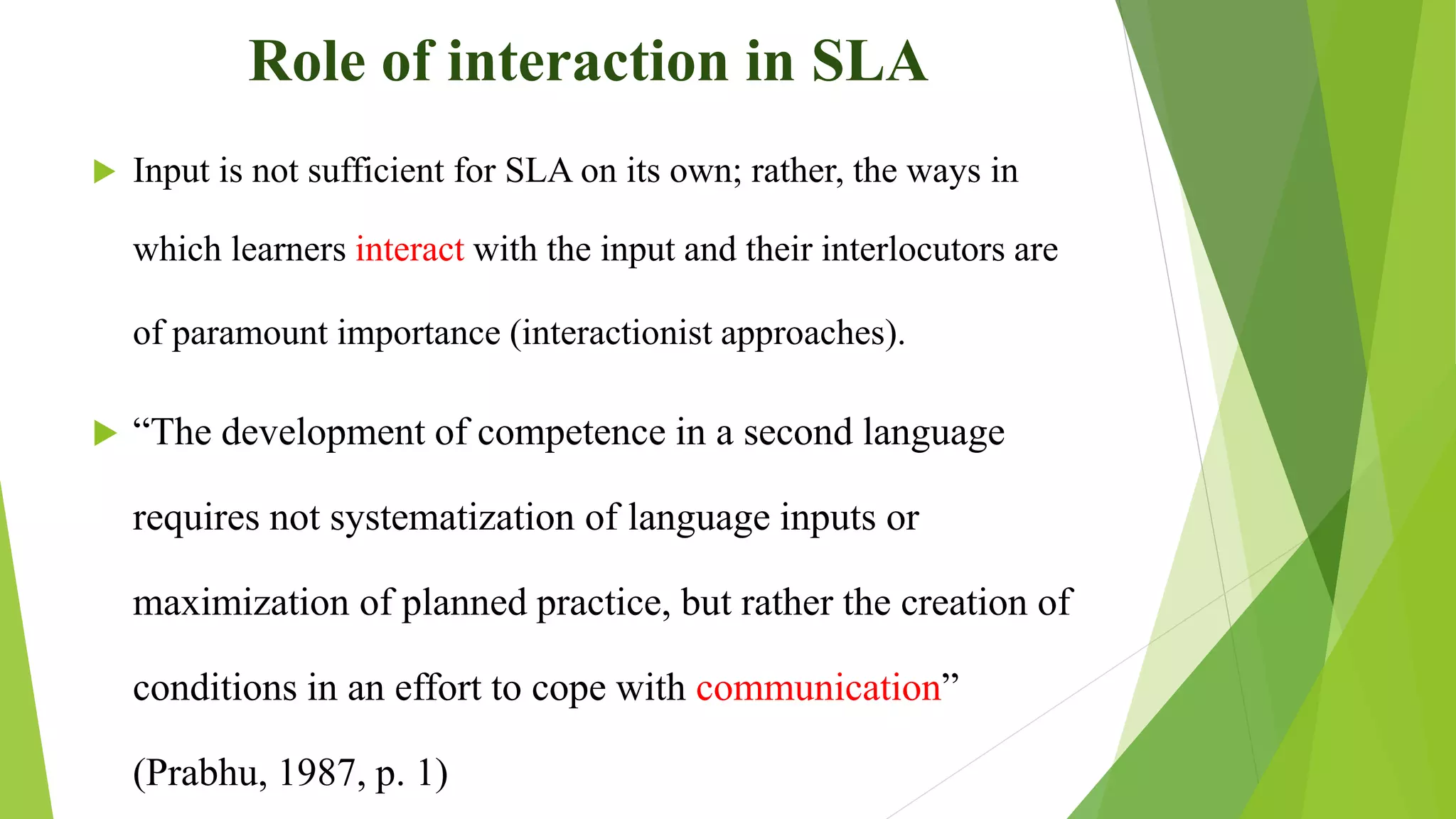
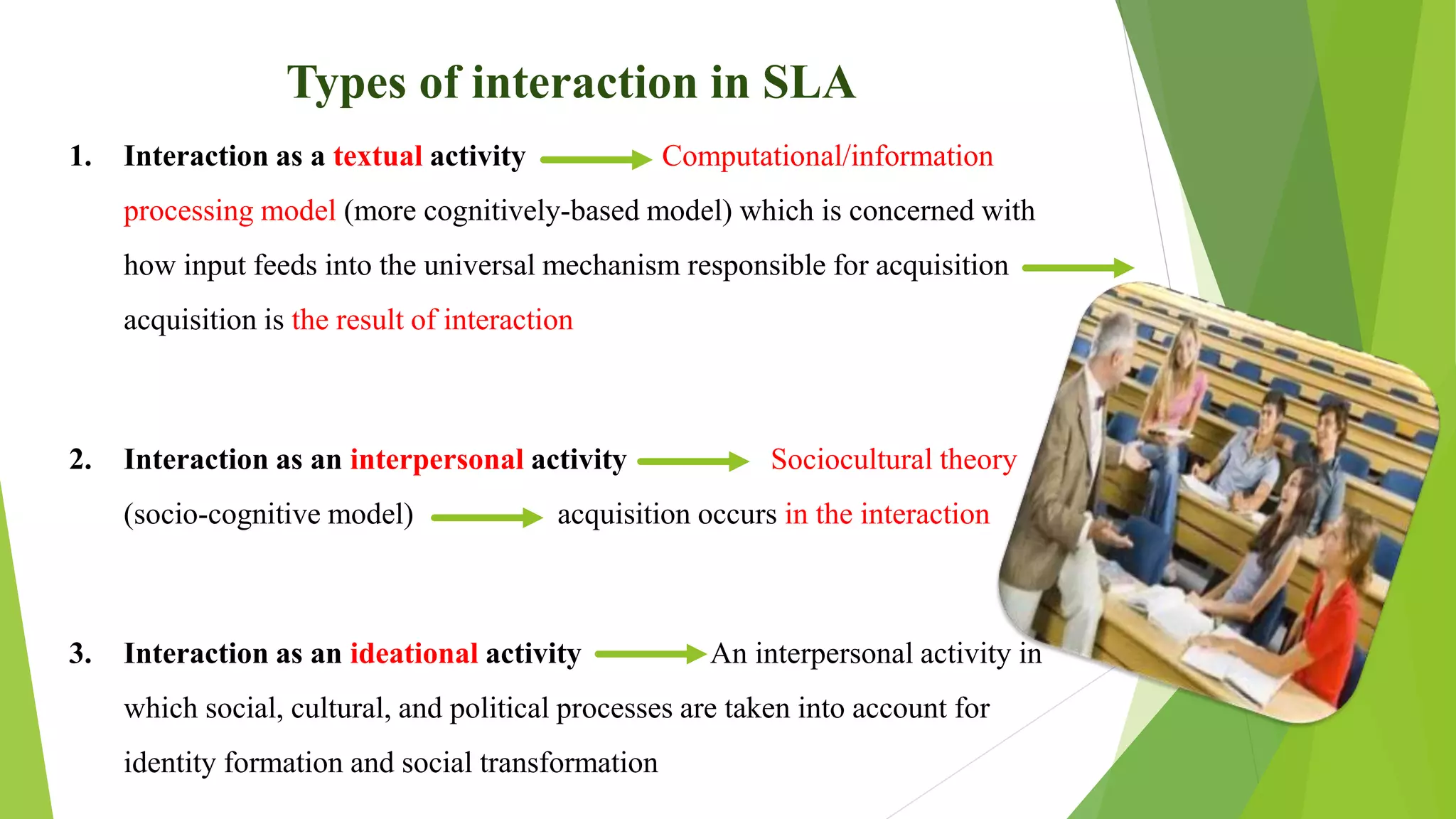
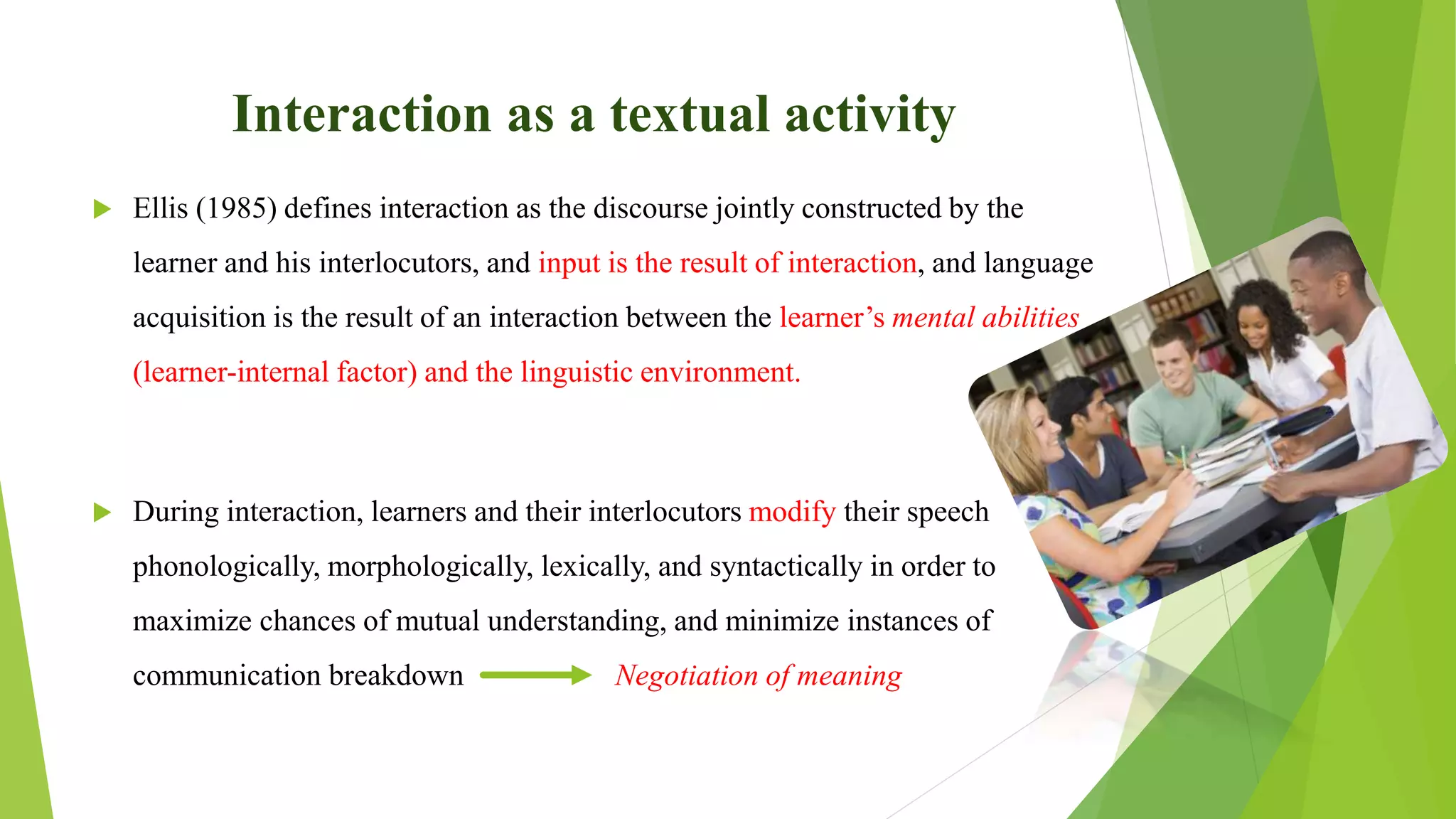
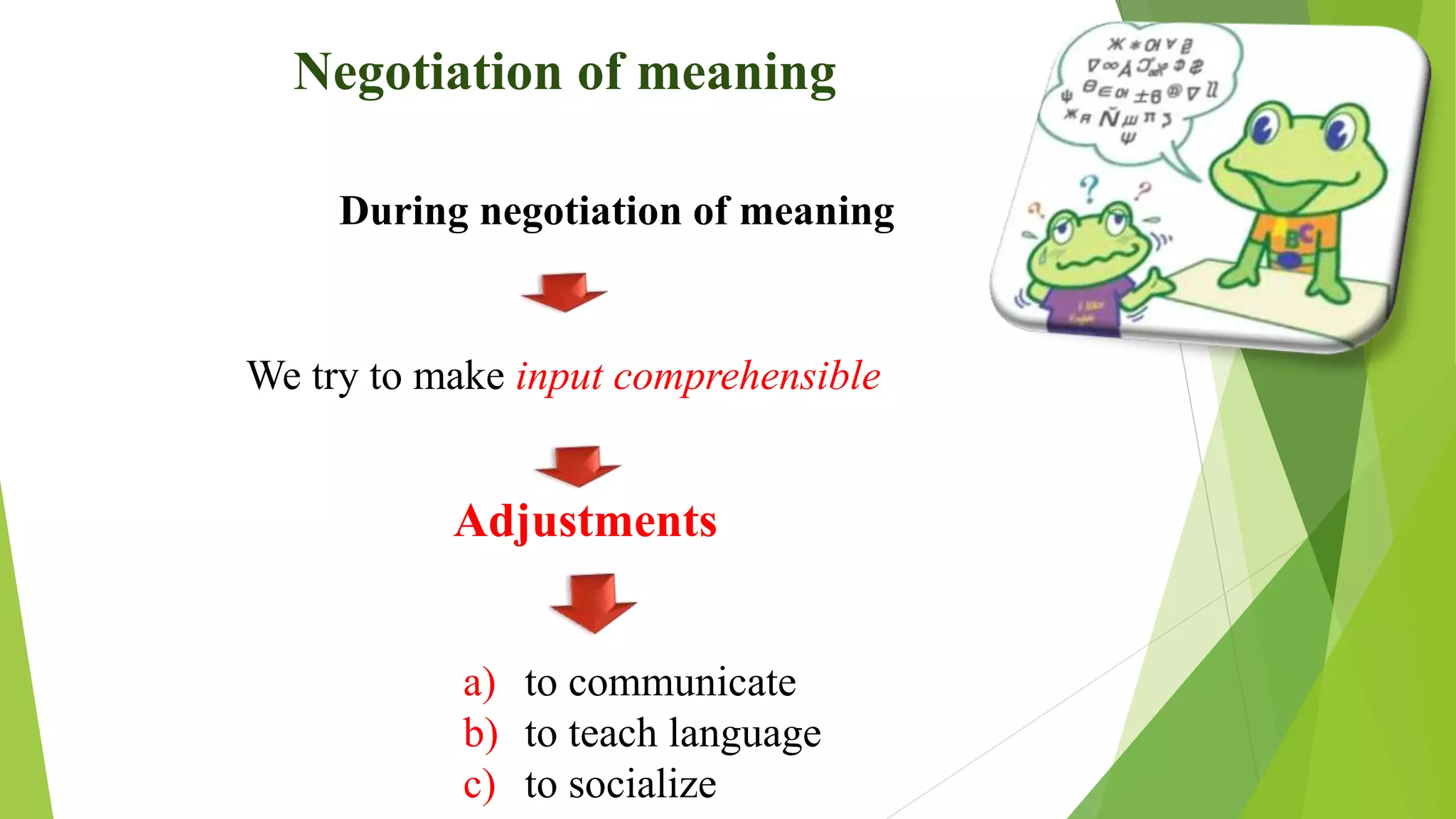
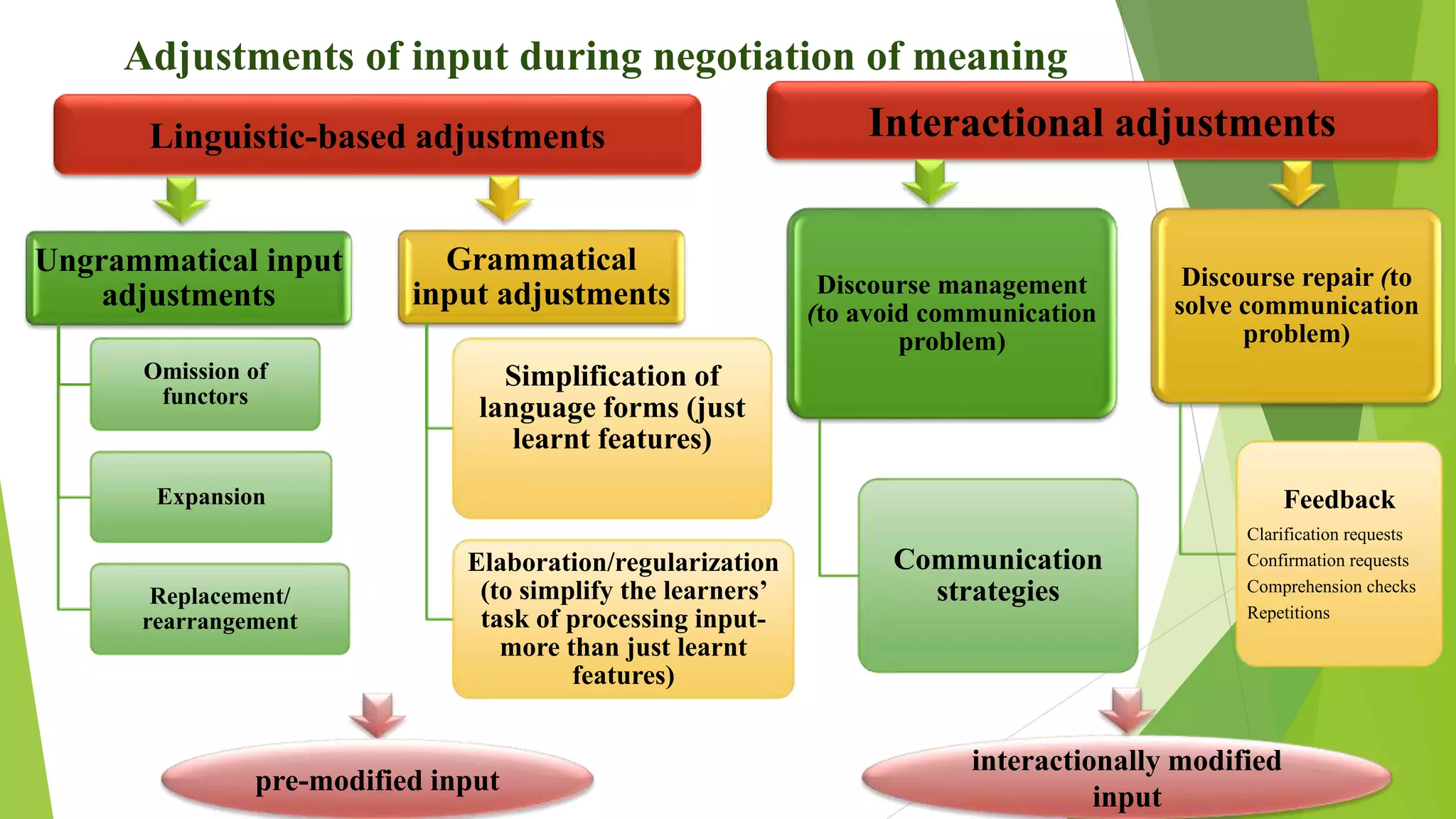
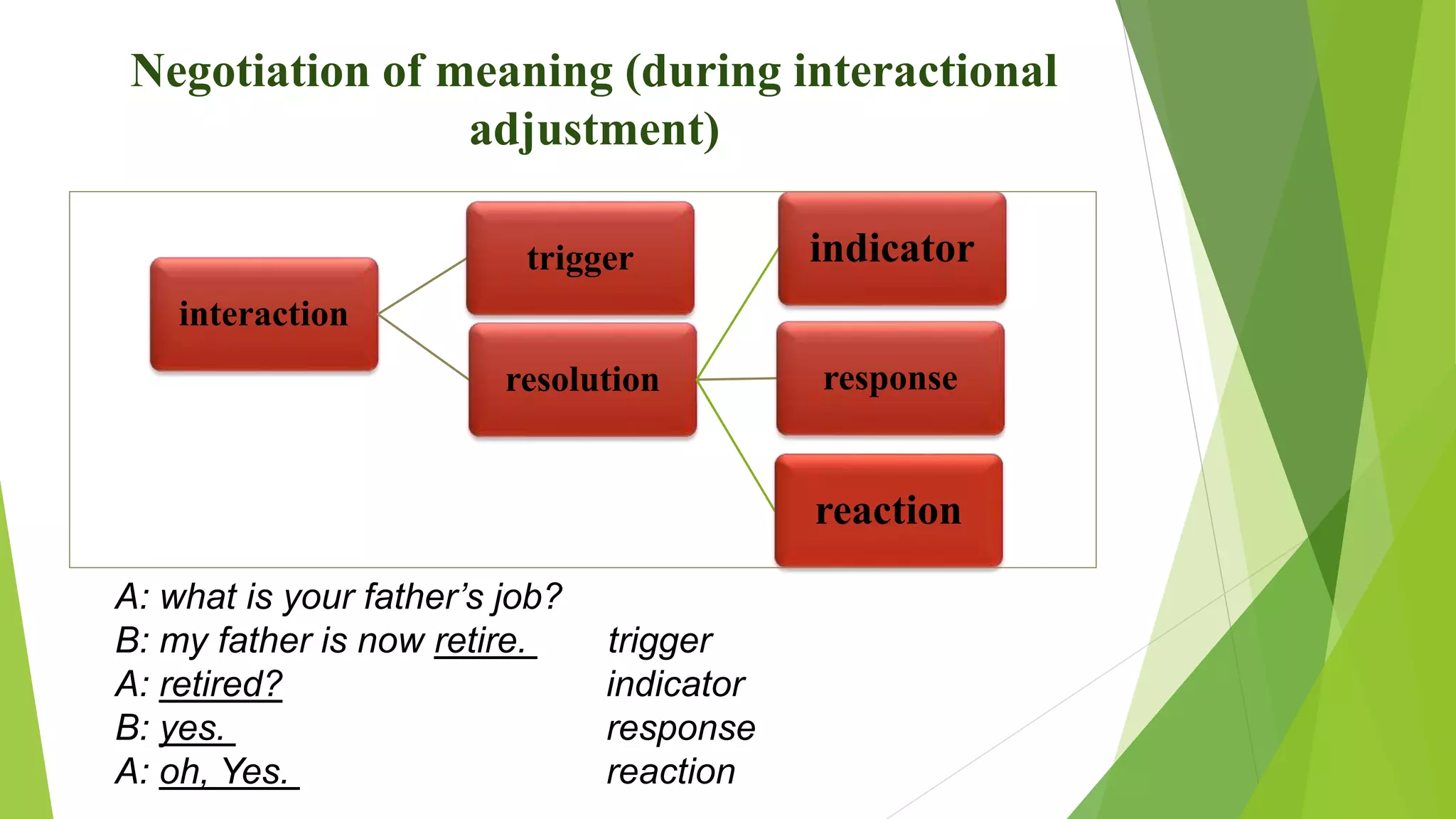



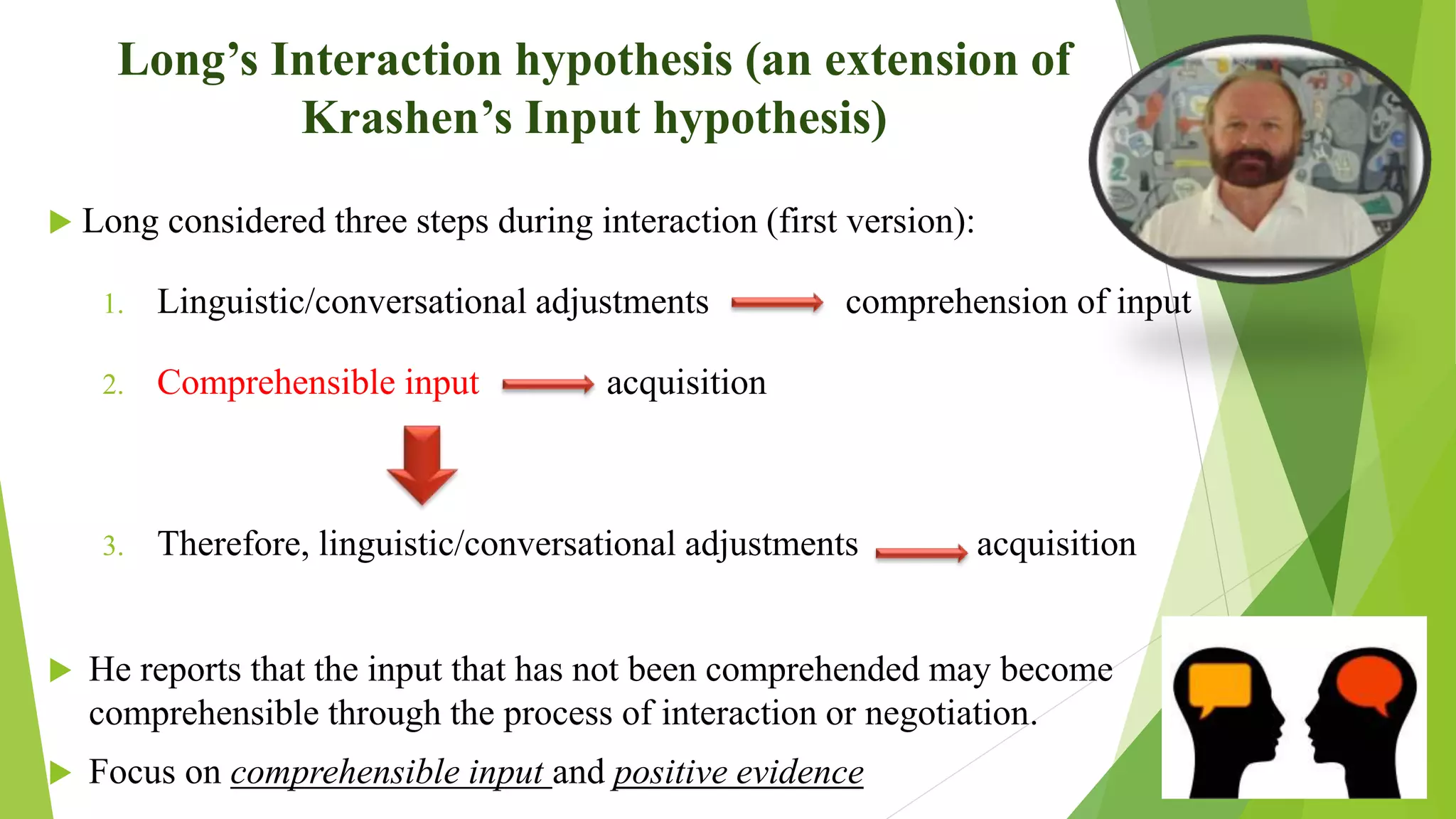
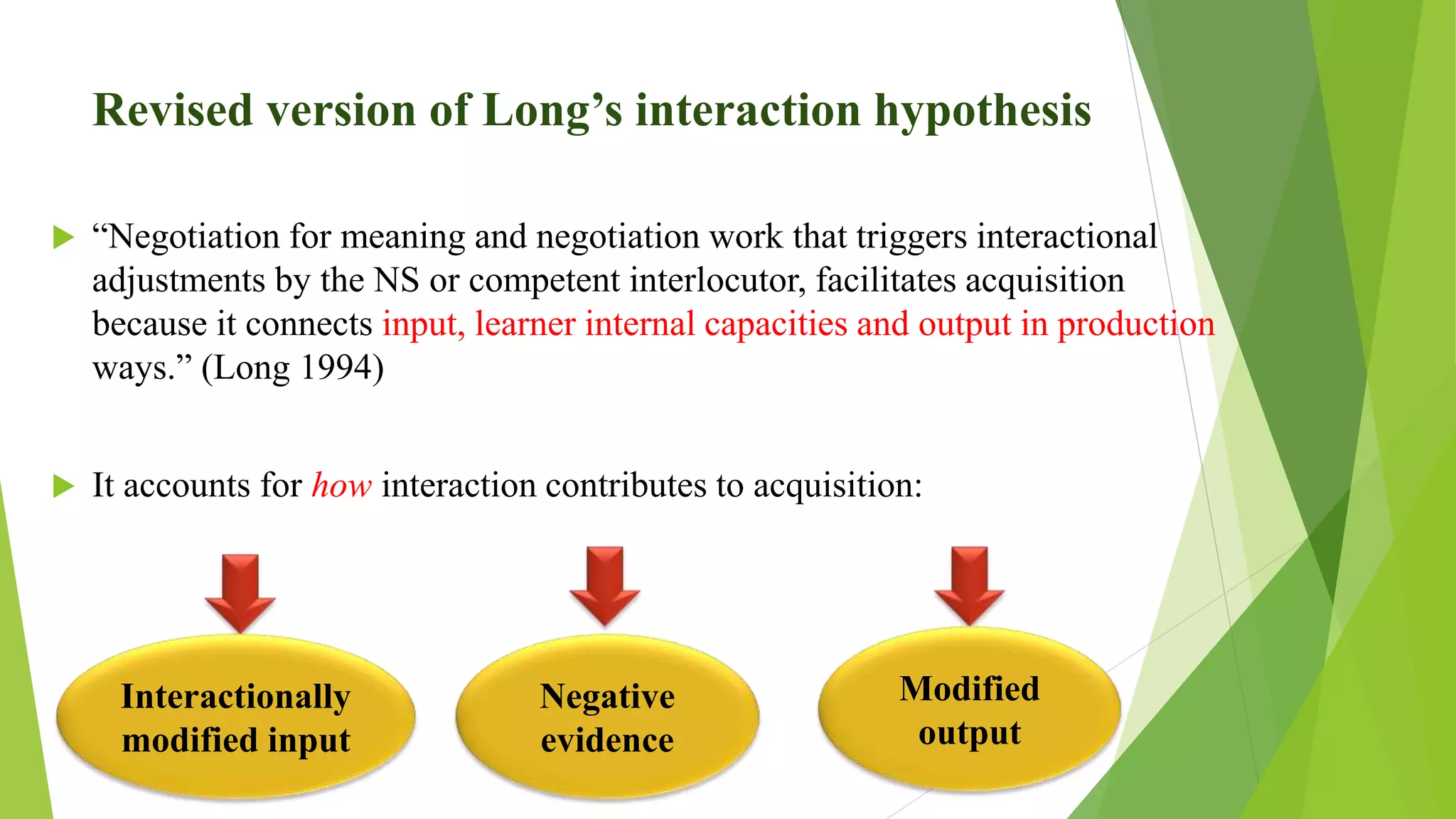
![Revised version of Long’s interaction
hypothesis (Cont.)
Interactionally modified input leads to acquisition
1) when it assists learners to notice linguistic forms in the input
(selective attention to form)
2) The noticed forms lie within the learners’ processing capacity
Negative evidence assists learners to initiate interlanguage
change
Modified output when there is uptake-with-repair after
locating the ‘gap’ between their own production and the target
form (noticing the gap in Schmidt’s [2001] term) and trying to
minimize the gap based on the feedback provided.](https://image.slidesharecdn.com/inputninteractioninsll-151219230347/75/Input-and-Interaction-in-second-language-learning-22-2048.jpg)
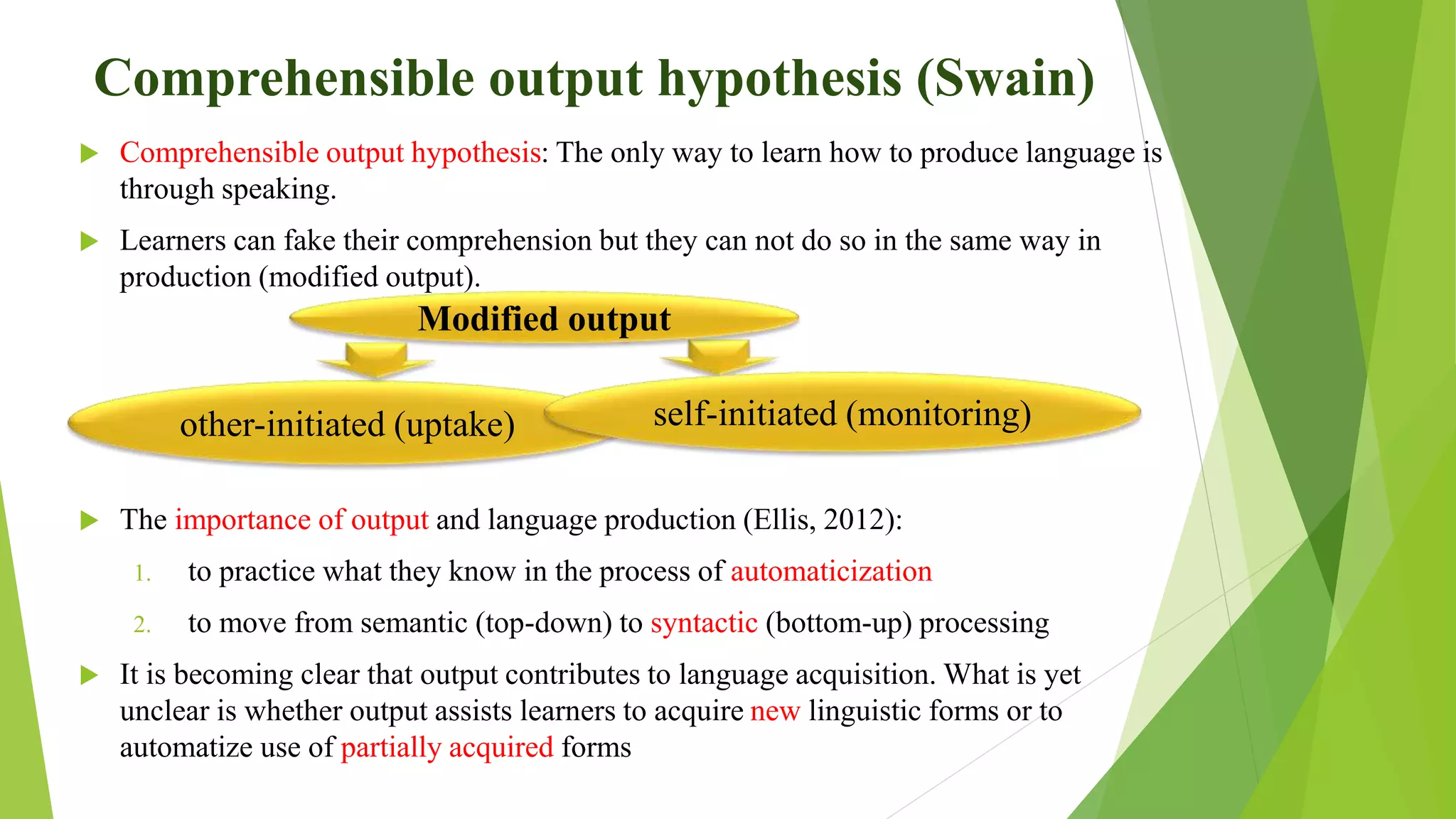

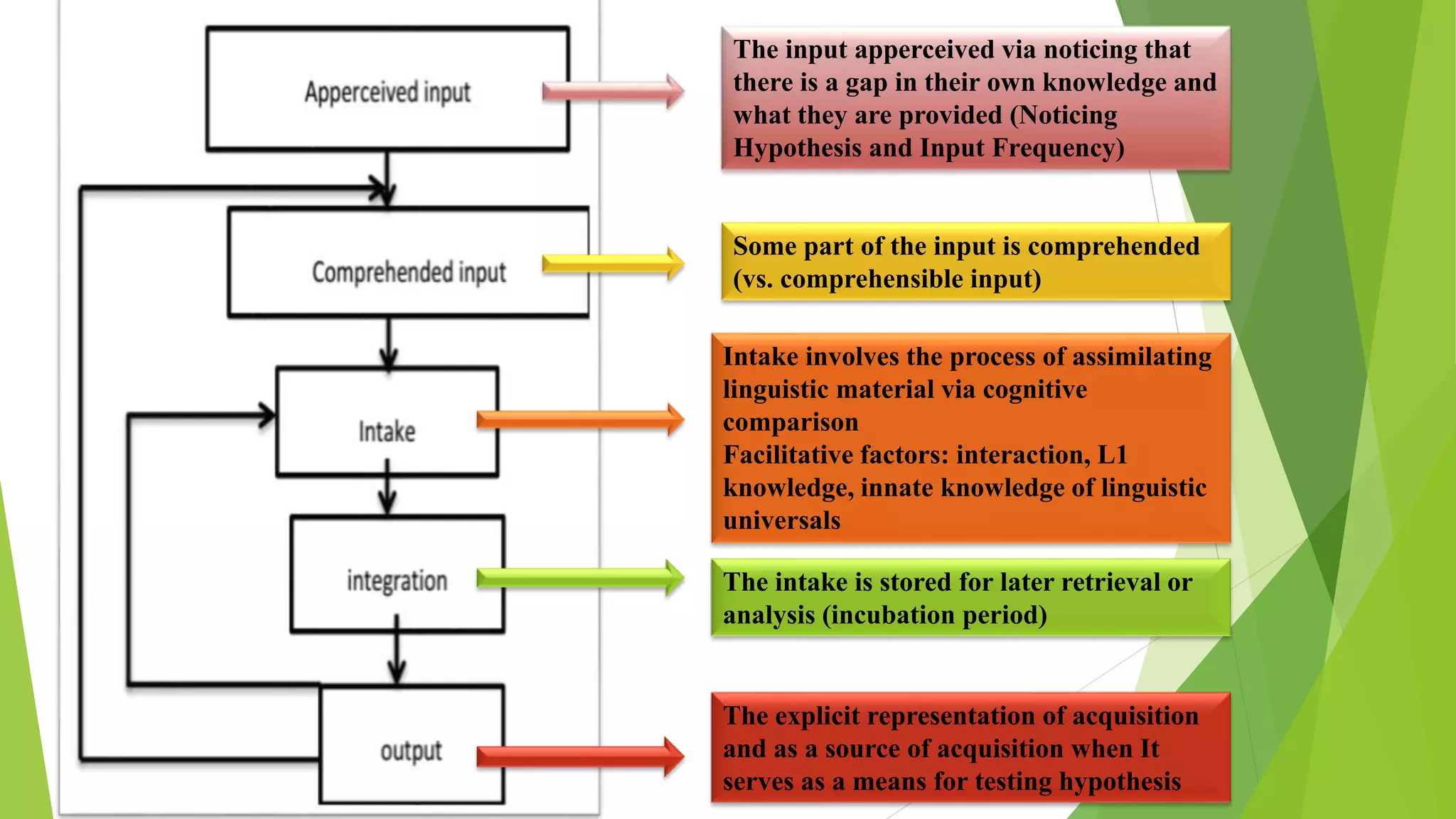
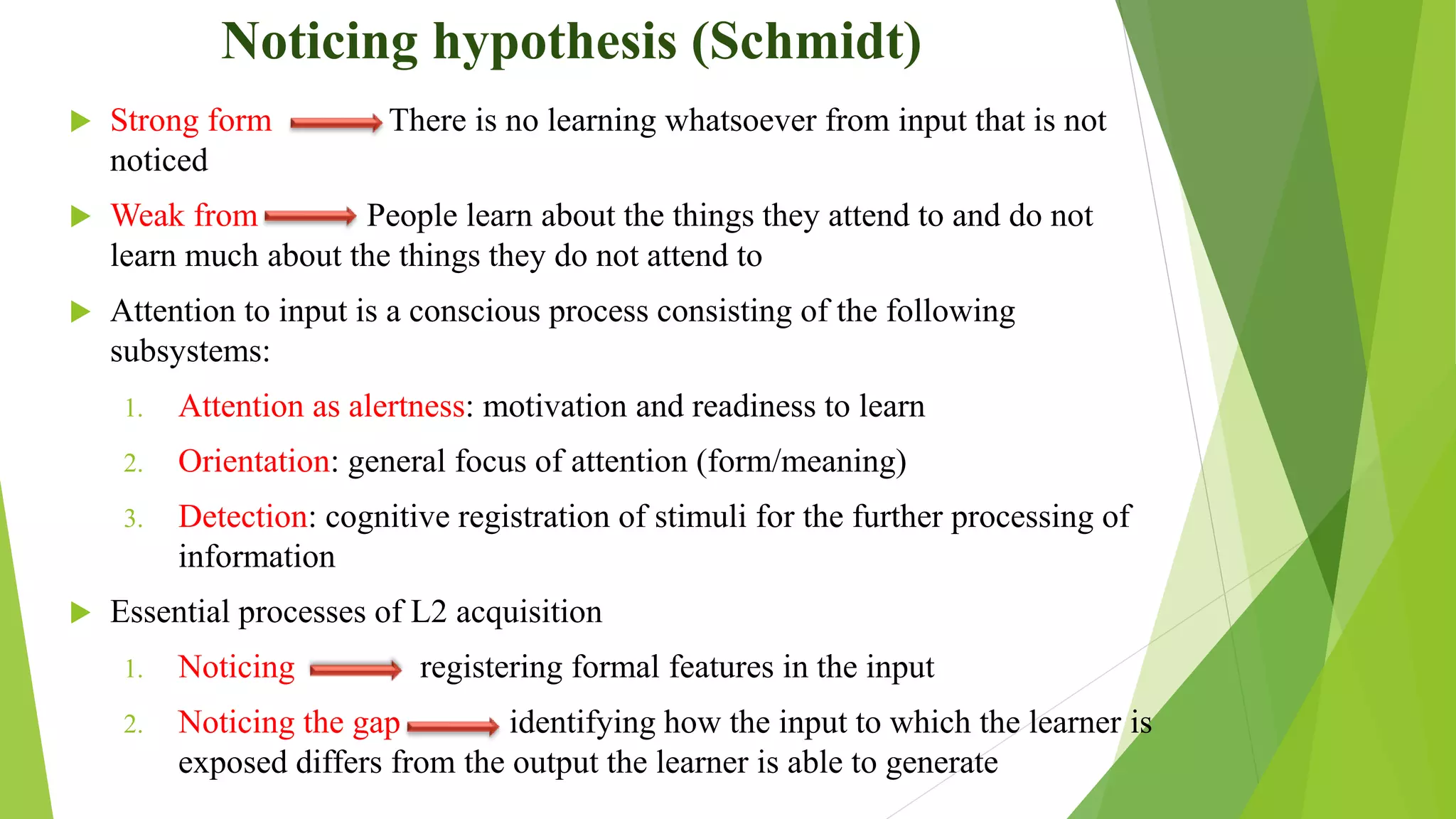
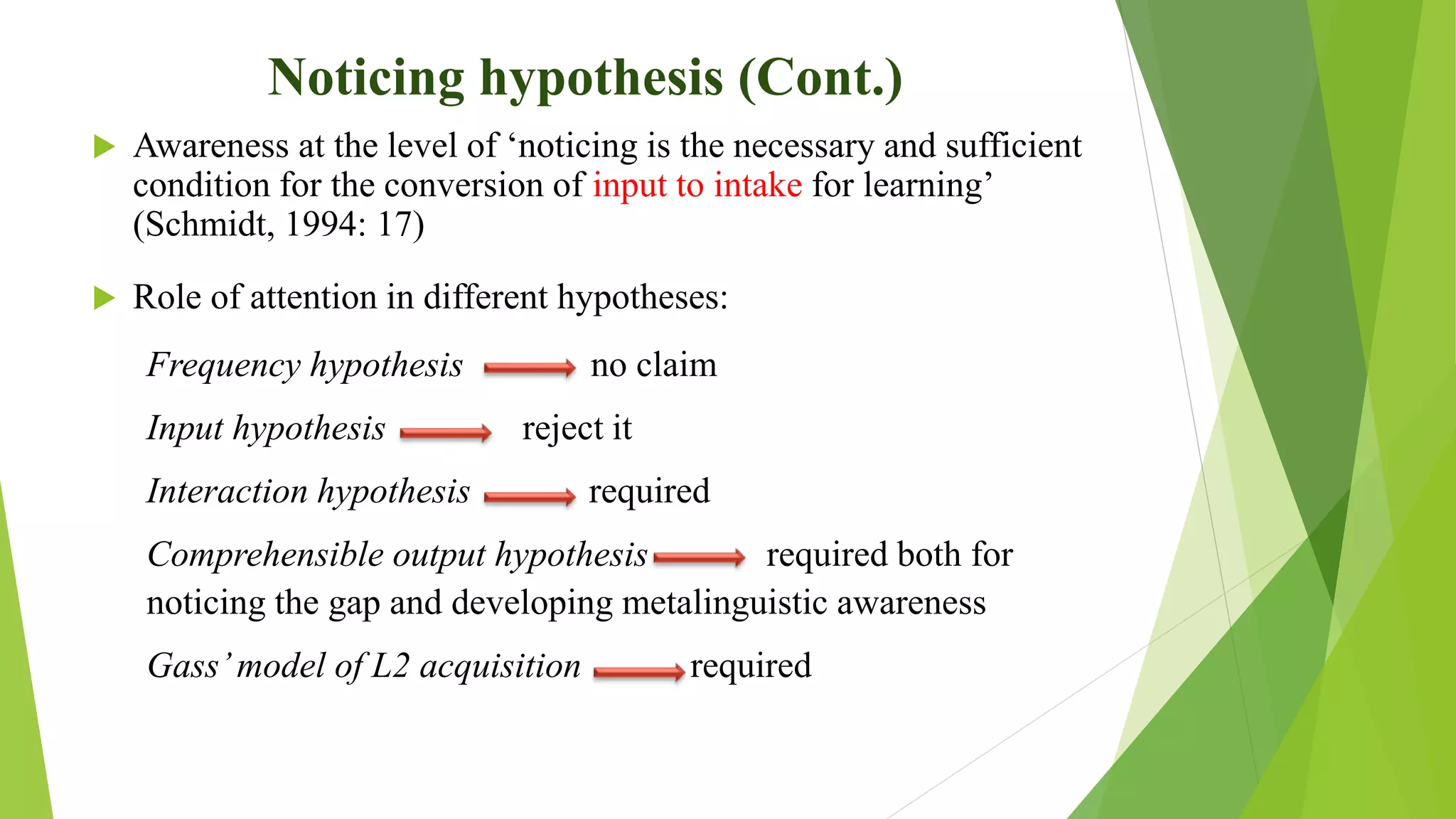

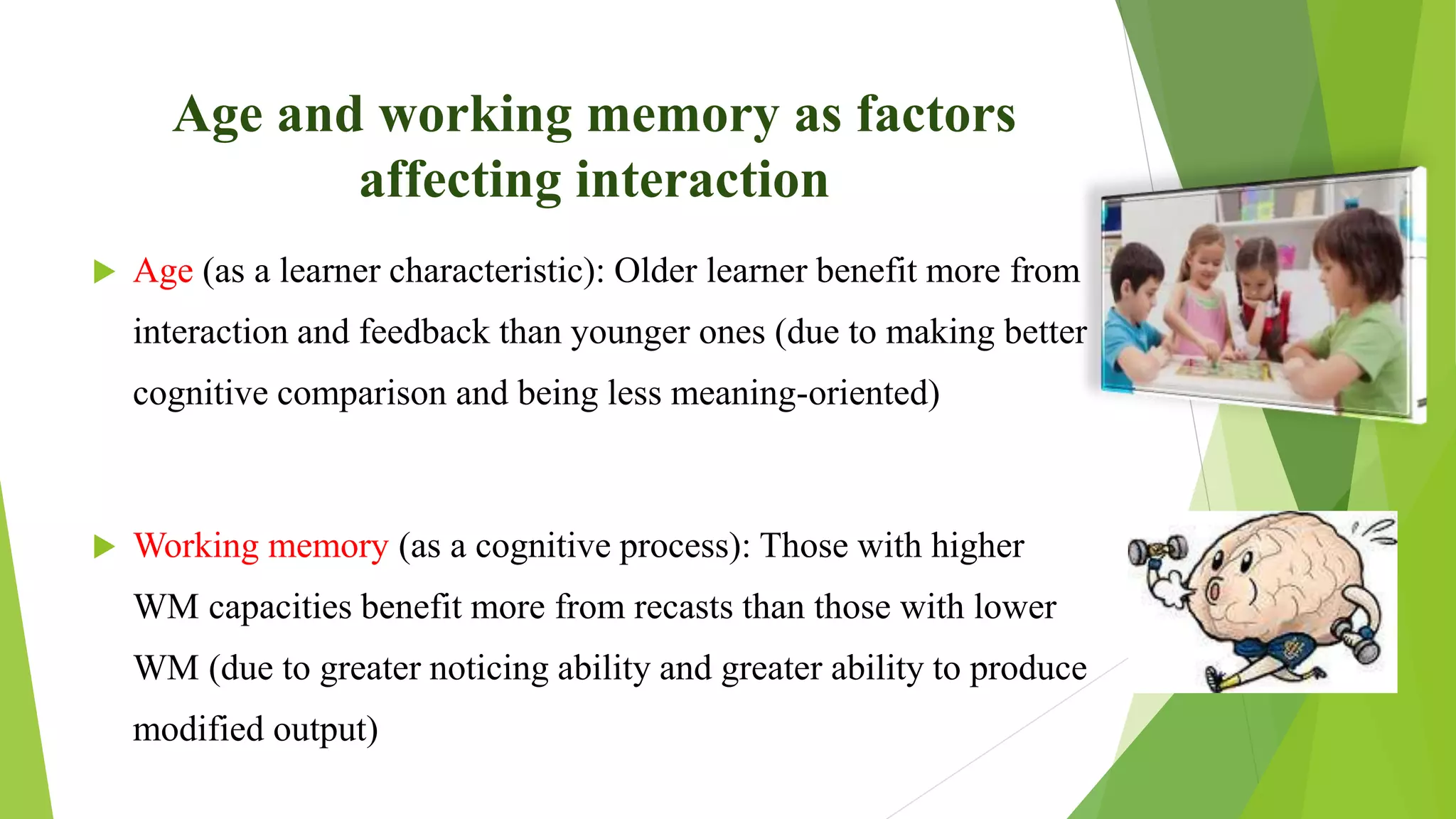

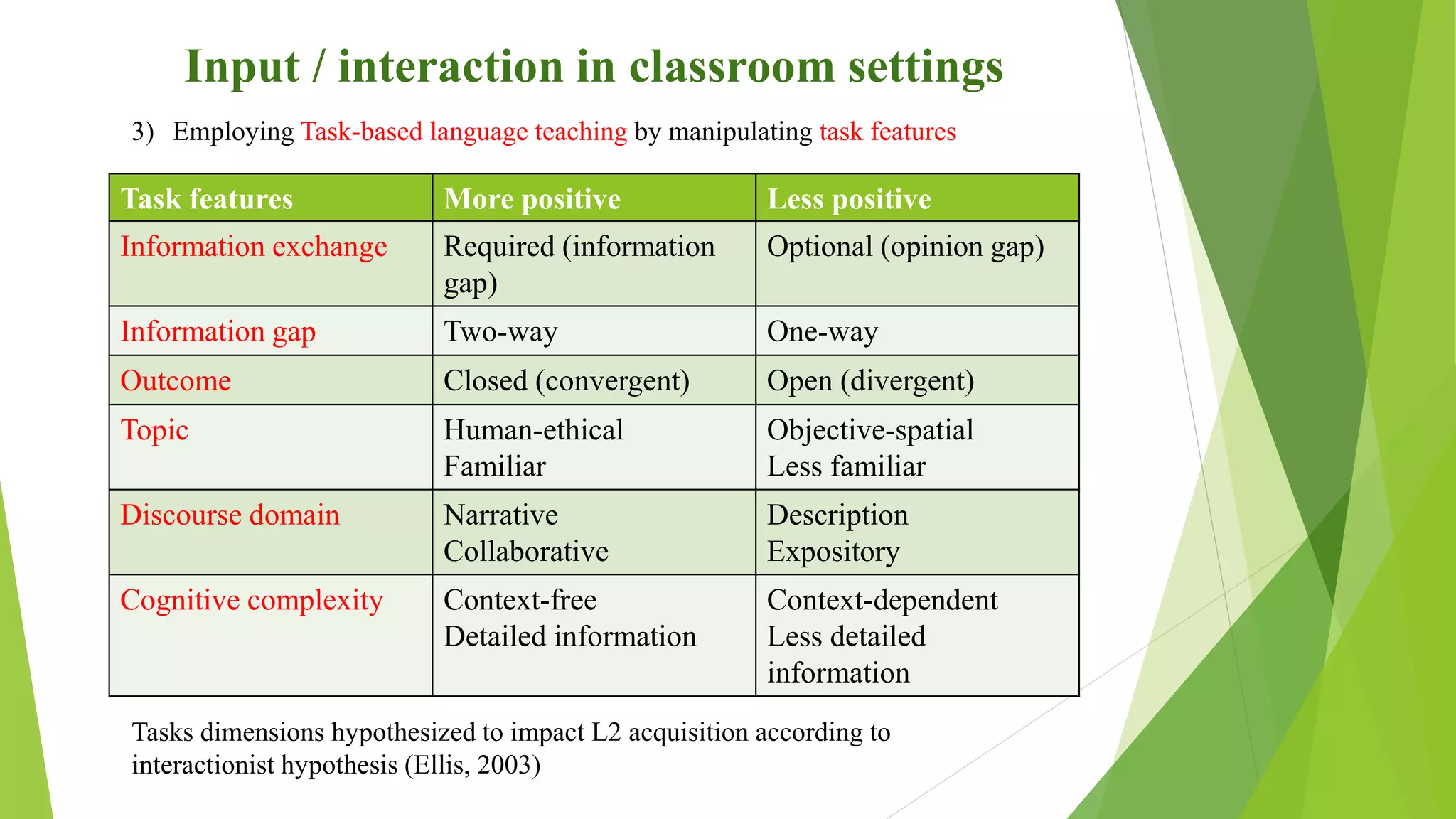
![Methodology in Input/interaction research
Research mostly focus on how interaction affects L2 learning.
Methods are:
1. Descriptive methods (naturally occurring samples or clinically
elicited samples)
2. Experimental methods
3. Self-report methods
4. Introspective methods (think-aloud tasks [problem of reactivity or
dual processing] or stimulated recall [problem of veridicality],
immediate recall [problem of untypical learning behavior]),
Uptake chart
5. Priming: The tendency of the speaker to use syntactic structure
they had heard from the interlocutor’s preceding utterance
evidence of noticing and modified output.](https://image.slidesharecdn.com/inputninteractioninsll-151219230347/75/Input-and-Interaction-in-second-language-learning-32-2048.jpg)
